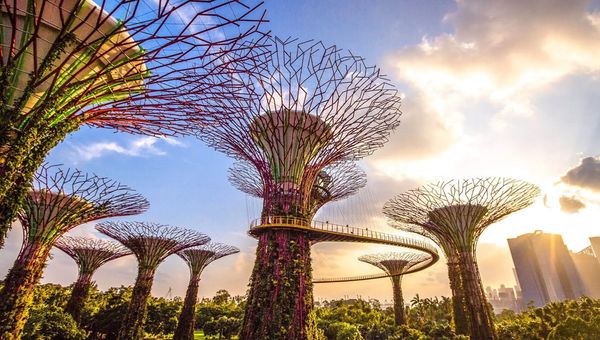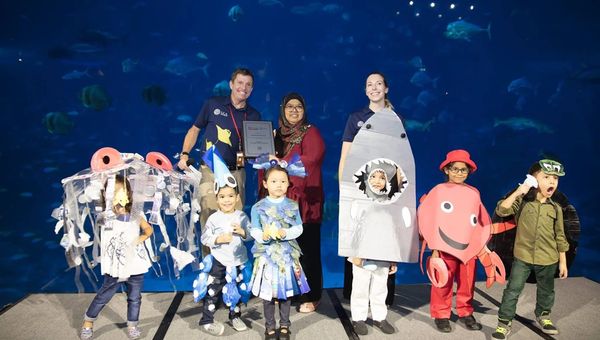Tourist attractions are reimagining the future of fun - one that's both green and engaging. At the Global Sustainable Tourism Conference 2024 (GSTC), industry leaders demonstrated how attractions are making this vision reality. The event, hosted at Resorts World Singapore from 13-16 November 2024, highlighted innovative approaches to combining entertainment with environmental responsibility.
The panel session on "Sustainability in Attractions" was a highlight of the GSTC conference. Moderated by Ioannis Pappas, the Mediterranean programme director of GSTC, the discussion featured speakers from Gardens by the Bay, Resorts World Sentosa, Mandai Wildlife Group, and Ladybird Farm Leisure Center. They explored critical issues affecting the rapidly expanding thematic parks sector, which is growing at an annual rate of 6% and is projected to be valued at US$100 billion by 2030.
Attractions are uniquely positioned to inspire visitors to adopt sustainable behaviours and help preserve cultural heritage while protecting natural resources.
Creative use of sustainable venues

Gardens by the Bay combines sustainable innovation with nature, using Supertree structures for exhaust management and solar energy while studying biodiversity. Photo Credit: Gardens by the Bay
Panel speaker Addison Goh, senior director, business development & sustainability office from Gardens by the Bay, shared that the attraction's innovative cooling features and Supertree structures manage exhaust from the biomass system. The structures also act as chimneys to eliminate hot exhaust air from the desiccant system, whilst solar panels harness additional energy.
The venue also serves as a living laboratory for urban wetlands, studying carbon storage and supporting biodiversity.
Effective target tracking
Jen Ong, assistant director – Sustainability at Resorts World Sentosa (RWS), shared details of its 2030 Master Plan, which includes 25 goals focused on decarbonisation, sustainable infrastructure, and community engagement.

The S.E.A. Aquarium is evolving into the Singapore Oceanarium, focusing on sustainability with immersive exhibits promoting marine conservation and education. Photo Credit: Resorts World Sentosa
The S.E.A. Aquarium will expand next year, rebranded as part of the Singapore Oceanarium, featuring educational and conservation messages, while Universal Studios plans to launch the first carbon-neutral Minion Land.
Besides tracking these goals on an annual basis, Jen added that RWS looks into the various business units to ensure alignment with energy waste and water consumption targets, including the conservation efforts being undertaken.
According to Wei Bin Ong, senior manager, sustainable solutions at Mandai Wildlife Group, it is vital to track progress against clear targets and to engage staff in sustainability initiatives. The bottom-up approach is an effective way to drive staff engagement and raise awareness of targets.
An example of this is the creation of an animal playground using repurposed materials, resulting in significant cost savings. This initiative was successfully implemented by staff from its animal behavioural programme.
Ong also emphasised that attractions can show leadership by working with suppliers and partners to innovate and find solutions, striving to make use of every touchpoint as an opportunity to inspire behaviour change in visitors.
Maximising impact with minimal resources

Ladybird Farm Leisure Center in Hungary offers eco-friendly adventures, educational workshops, farm animal encounters, and sustainable practices for families and nature enthusiasts. Photo Credit: Ladybird Farm Leisure Center
Advocating the need to renew business mindsets, János Handó, founder of Ladybird Farm Leisure Center, a theme park in Hungary, highlights the benefits of maximising fun with minimal resources. “Whatever we devise, it should not consume any energy. If it does, then we must produce the required energy from renewable sources locally,” he added.
Handó also shared insights on the importance of constructing energy-efficient facilities, pointing out that a higher initial investment can lead to substantial operational savings.
As industry leaders shared innovative strategies and commitments to sustainability, it became clear from the conference that collaboration and proactive measures will be crucial in shaping a more sustainable future for the tourism sector.